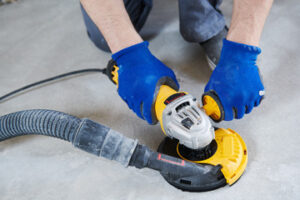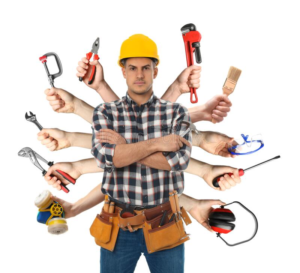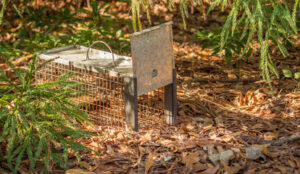Concrete Polishing Contractor Waco TX specializes in the maintenance and restoration of commercial concrete floors. This process uses heavy-duty machines to grind down and smooth concrete surfaces to a desired level of sheen.

This is accomplished using grinding steps with progressively finer grit industrial diamonds. The process is followed by an internal impregnating sealer, which helps harden and dustproof the surface.
Concrete polishing is a great way to restore concrete surfaces and protect them from damage. It increases the hardness of the surface, which improves resistance to abrasion and weathering. It also makes the floor easier to clean and can help reduce the need for chemical cleaners. The process of concrete polishing involves grinding and honing the surface with heavy-duty machines. The result is a beautiful, glossy floor that can be easily maintained with regular sweeping and mopping.
A good concrete polishing contractor will have the equipment to do a complete job, and they should be able to communicate with their customers clearly. This is especially important in a large project where the scope of work needs to be carefully defined. A well-defined scope of work will prevent miscommunications and ensure that all parties are aware of what is expected from each other.
The concrete polishing process is a complex one, and it requires the use of special machines that produce a smooth finish. It is also an environmentally friendly process, as no harmful chemicals are used. It also eliminates the need for carpets and tiles, which can be expensive to replace or maintain.
Before starting the job, a concrete polishing contractor should evaluate the site and determine what kind of machinery will be required to do the work. They should also check the availability of water for cleaning and disposal of slurry, as well as electrical outlets for powering machinery. They should also make sure that the area is clear of objects and structures that could get damaged during the process.
Once the scope of work has been determined, the concrete polishing company will issue a quote to the customer. This document should include the price of the supplies, labor hours, and a margin to cover maintenance costs. The more detailed the scope of work, the fewer issues will arise during the project’s duration.
Concrete polishing is an excellent option for a number of applications, including retail stores and office buildings. Its high light reflectivity enhances a building’s aesthetic and promotes productivity. It is also more durable than other flooring materials and can be installed quickly. It is also easier to clean and resists stains and spills, making it ideal for commercial facilities.
Experience
Choosing the right concrete polishing contractor can help you save time and money and get the results you want. A reputable company should be able to provide references from previous clients and have experience working on a variety of projects, including hospitals, schools, government offices, and commercial needs. They should also be able to work with a variety of construction schedules to avoid any delays or interruptions.
A good contractor should be able to give you an accurate quote for the job in less than a day. They should also be able to answer any questions you might have about the project. They should be able to provide you with samples of the finishes they can achieve, as well as provide photos of other projects they have worked on.
Many grinding equipment retailers offer 2- to 3-day in-house courses to teach people how to use their products. These courses only scratch the surface of the complexities involved in concrete polishing, however. It takes years of on-the-job experiences to become a qualified polished concrete tradesman.
When you choose a contractor, ask about their work history and how long they’ve been in business. It’s also a good idea to verify their certification status with the American Concrete Surface Conditioning Association (ASCC). This will give you peace of mind that they are experienced and qualified to do the job.
You should also consider whether the company has the proper tools for the job at hand. For example, they should have access to water for auto-scrubbers and an electrical outlet to run electric-powered grinders. They should also have a safe and accessible place for slurry disposal. Finally, they should be able to arrange for transportation to the site and set up an electric generator, if necessary.
A quality concrete polishing contractor can create beautiful, durable floors that enhance the look of a facility. They can also add color to the floor by staining it with a wide range of colors, from neutral earth tones to deep jewel tones. Staining the concrete can also highlight patterns or shapes in the floor. This can make the floors more attractive and improve employee morale. In addition, stained floors are easy to clean and do not require the use of chemical cleaners, which can help reduce health and safety issues in the workplace.
Safety
Concrete polishing contractors have a responsibility to protect the safety of people in their workplaces. This includes ensuring that their employees wear protective clothing and take other precautions to minimize health risks. For example, they should use a respirator to reduce exposure to concrete dust. This is important because inhaling this dust can cause silicosis, a disease that causes symptoms similar to those of lung cancer. The contractor should also ensure that the workplace is free of obstructions and hazards before starting work.
Concrete cutting, surface grinding, and concrete floor polishing produce crystalline silica dust, which is dangerous to workers. Inhaling this dust can lead to a variety of respiratory diseases, including silicosis and chronic obstructive pulmonary disease (COPD). Those who work in these fields should wear a mask or respirator to prevent exposure to the dangerous particles. Moreover, they should wear a face shield to keep the dust away from their eyes.
In addition to the above safety measures, concrete polishing contractors should also follow all local and federal laws regarding waste disposal. They should use an approved waste container and dispose of it in a secure location. They should also ensure that they store all materials in accordance with their manufacturers’ printed instructions. In addition, they should keep a written document of the entire project, including responsibilities, and have all employees sign it at the end of the day.
A detailed scope of work will help the customer understand the work that will be performed. This will minimize the likelihood of misunderstandings and disagreements between the customer and the contractor. It will also ensure that the job is completed in a timely manner.
Dirty, dusty floors are a major contributor to slips and falls in commercial facilities. They can also affect employee morale. Polished concrete can make your facility look clean and improve its aesthetics while reducing the strain on maintenance staff. It is a cost-effective alternative to other floor treatments. It is also easy to clean and resists stains. If you want to add extra traction, you can apply a sealer that contains anti-slip grit additives.
Cost
Concrete floor polishing is a process that uses heavy-duty machines to grind and smooth the surface of existing concrete. It can make the concrete look like new, and it also provides a hard, durable finish that will resist scratches and stains. It is cheaper than installing other flooring materials, such as carpet, and it requires less maintenance over the long term. However, it is important to find a reputable company that will not charge too much for their services.
The cost of a concrete polishing contractor will depend on the level of shine that you want for your floors. Generally speaking, each additional level of shine tacks on an extra $0.35 to $0.75 per square foot. In addition, the costs of materials and equipment are factored in. Typically, concrete polishing companies will calculate these numbers for the customer before they issue a quote.
In some cases, the existing concrete may need to be repaired before the polishing process begins. This is particularly true in older warehouses that may have extensive damage from years of heavy traffic and use. Usually, the repair process will require an overlay that will be poured over the existing concrete before it can be polished. The overlay will add an additional $2 to $4 per square foot in addition to the costs of labor and equipment.
When a new concrete slab is being built, it should be designed to a very high standard in order to facilitate the polishing process. This will ensure that the finished product will be as durable and long-lasting as possible. In addition, the concrete must be poured to full depth and properly cured before it is polished.
Once the concrete is ready for polishing, the company will bring in a team of professionals to remove all the imperfections and dirt that may be present on the surface. In most cases, this will take several stages and will include the application of chemical densifiers that will strengthen the concrete.
The concrete polishing process can be messy and dusty, so it is crucial to have everything cleared out before the crew arrives. It is also a good idea to choose a non-busy time of year when the contractors can work more efficiently and save you money.








